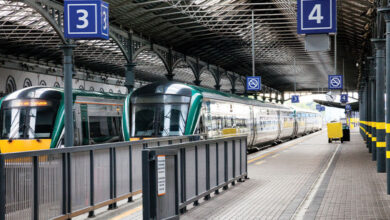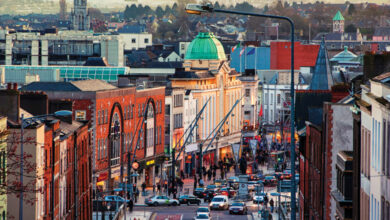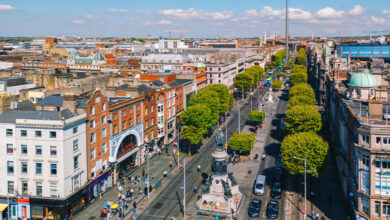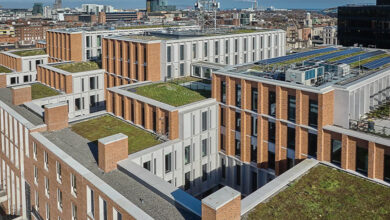The promised land
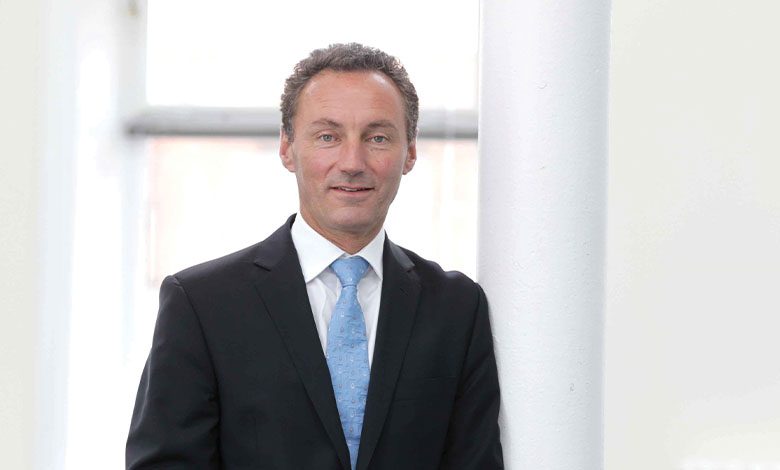
Ireland was in the midst of an existential crisis 70 years ago but the quiet determination and sheer brilliance of TK Whitaker played a pivotal role in establishing the groundwork for Ireland’s transformation, writes David Gavaghan.
In 1958, the Republic’s population, which had been declining at an alarming rate – 400,000 leaving Ireland in the 1950s – was less than three million, whilst Northern Ireland’s was less than 1.5 million.
Today there are over seven million living on the island; nine million people might be living in Ireland by 2050. In July 2025, the Financial Times published a fascinating article on the decline of rural populations across Europe; Ireland however was once again the outlier with a completely different anticipated population profile to the rest of the EU. This will present Ireland with a very different challenge but like the rest of Europe, we share the accelerating challenge of climate change.
Although Ireland may be a major beneficiary from the impact of climate change due to our more temperate climate, rising sea levels will have enormous implications for Dublin, Belfast, and Cork and all populations along the coastal regions of Ireland (and in some areas further inland).
Economically and socially, the partition of Ireland has not served the fortunes of the two principal cities in Northern Ireland well. A century ago, Belfast was the acme of Irish cities with the northeast generating 80 per cent of the island’s wealth. Today the position is the reverse with Dublin now the powerhouse and Cork, Limerick, and Galway all making positive contributions to the Irish economy whilst Belfast and Derry, although now significantly improved, have yet to become sustainable economically.
Both cities have not seen the population growth that is being witnessed elsewhere in Ireland with Belfast city centre still to reach the much-heralded target of 400,000 people (currently 300,000 albeit there are 10 years still to run) and Derry city has remained broadly stuck with a population of under 100,000 for decades.
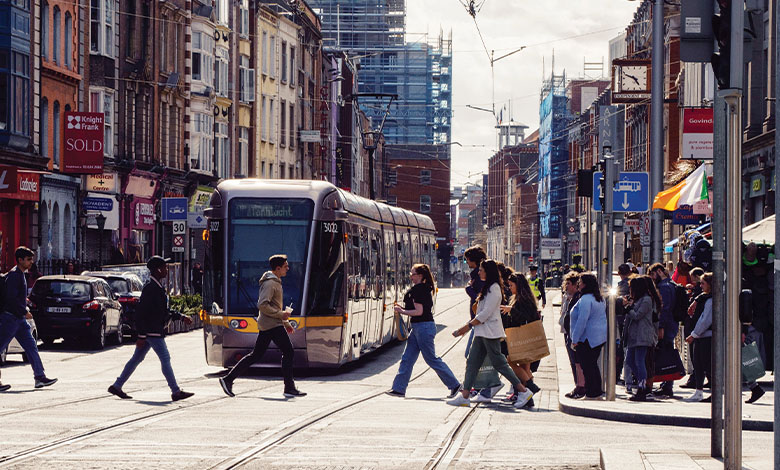
With potentially nine million people on the island in 25 years, what might be the configuration of the urban centres? Dublin will undoubtedly remain the pre-eminent city and, with a concerted effort to tackle the enormous challenges it faces including how to address rising sea levels, the population could be two million. Belfast too should see significant growth and, once partition leaves us, I believe there is a real prospect of it growing to more than one million people. It is worth remembering that in the 1950s Belfast’s population was 0.5 million.
To make this a reality for Belfast, it will require an extraordinary transformation in every aspect of its activities. One major contributor would be to travel between Belfast and Dublin in an hour or less by train (proponents of AI driven cars dream on!)
“It would be well to shut the door on the past and to move forward energetically, intelligently, and with the will to succeed, but without expecting miracles in a short period of time.”
TK Whitaker, Economic Development 1958
As night follows day, this will lead to an exponential growth in Belfast’s population. This trend has been seen across the world but closer to home once two similar sized cities and broadly equivalent distance – Milan and Turin – were able to avail of a high-speed train service just over a decade ago, the growth in numbers travelling between the two cities was exponential. To deliver such a major infrastructure project will require a sea-change in thinking and the abandonment of incremental snail like pace that has permeated decision making and investment. Our political masters and local government leaders need to tackle such projects with the same steely determination shown by the County Down man in the 1950s.
In terms of the other major conurbations across Ireland, there will ideally be a handful of cities that rise to the challenge of increasing their populations to 0.5 million or so. Cork is likely to be the leading candidate. But Galway, Limerick, Athlone, and Derry are all contenders. Many doubters suggest that I have a Panglossian view, but it is worth recording that in 1800 Belfast had some 20,000 inhabitants. A century later, the population had grown to some 350,000. Perhaps there was a vastly different attitude permeating society then – not all of it for the best of reasons. Only this week I read whilst waiting to board the train to Belfast in the decrepit designated zone of the famous Enterprise Express (then properly named and not the oxymoron it is today) ran for a period between Belfast to Cork.
Too often in Ireland, we fail to appreciate global trends and what is required to make us both globally competitive but also environmentally sustainable. Many global corporations will not even consider making an investment unless the population is more than a million people. The 15-minute city that has regained traction once again are a beacon of offering a sustainable future. The need to invest heavily in our biodiversity is a sine qua non in both urban areas as well all areas across the island of Ireland. It is shameful how we have destroyed one of the greatest natural gifts that our beautiful island had bequeathed us.
Peripheral rural areas of Ireland also face an exciting future, but political intervention that chooses to ignore how global capital is drawn to major conurbations is destined to failure. The need to ensure that throughout Ireland that we have detailed resilience plans will dictate whether we can weather the vicissitudes of climate change.
In the next decade, we will all face the full onslaught of climate change with millions of people seeking refuge on our little island. The will to succeed we saw 70 years ago should inspire us to redouble our efforts. There is no time to lose.

